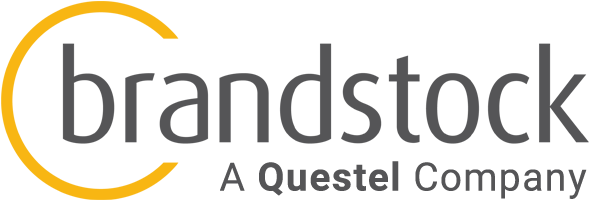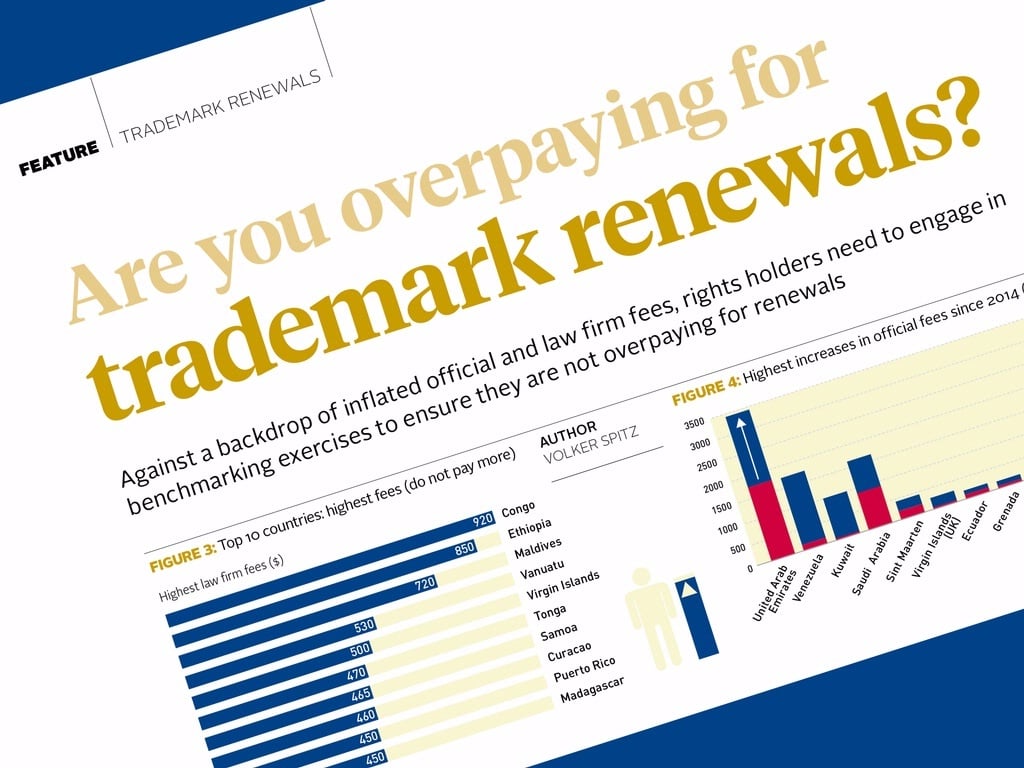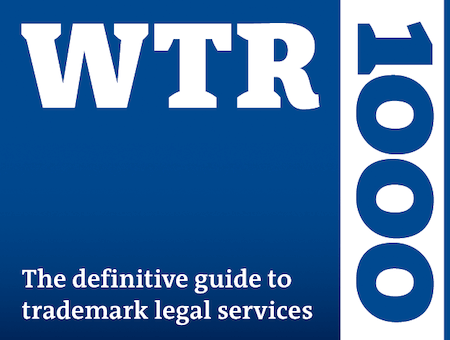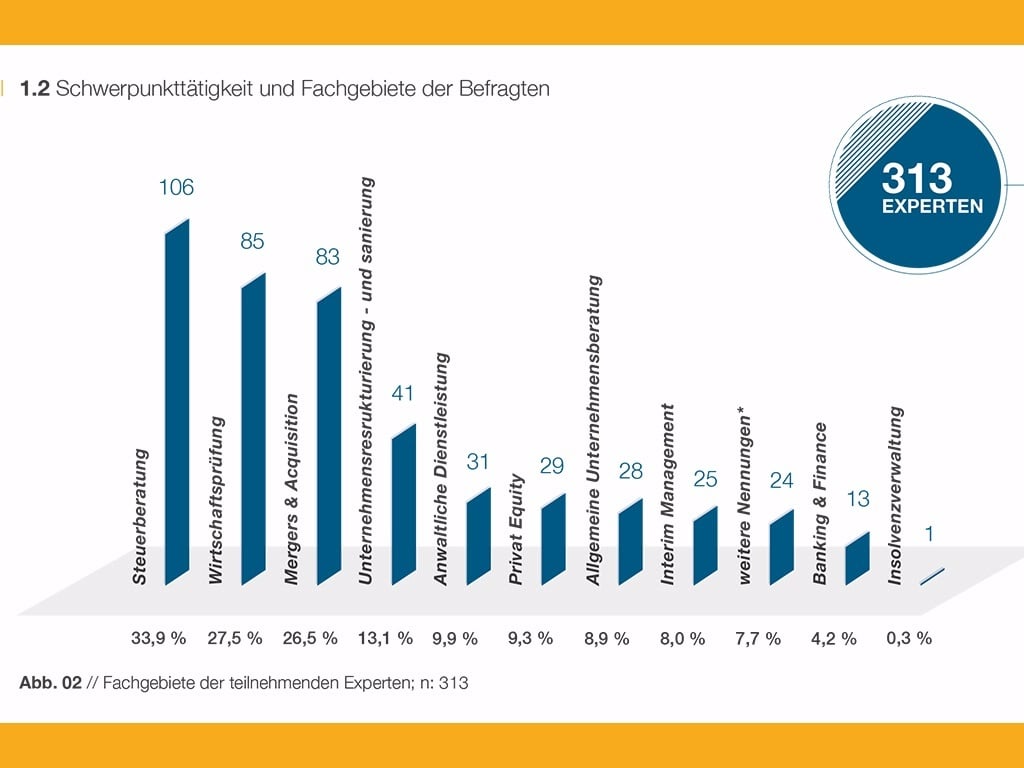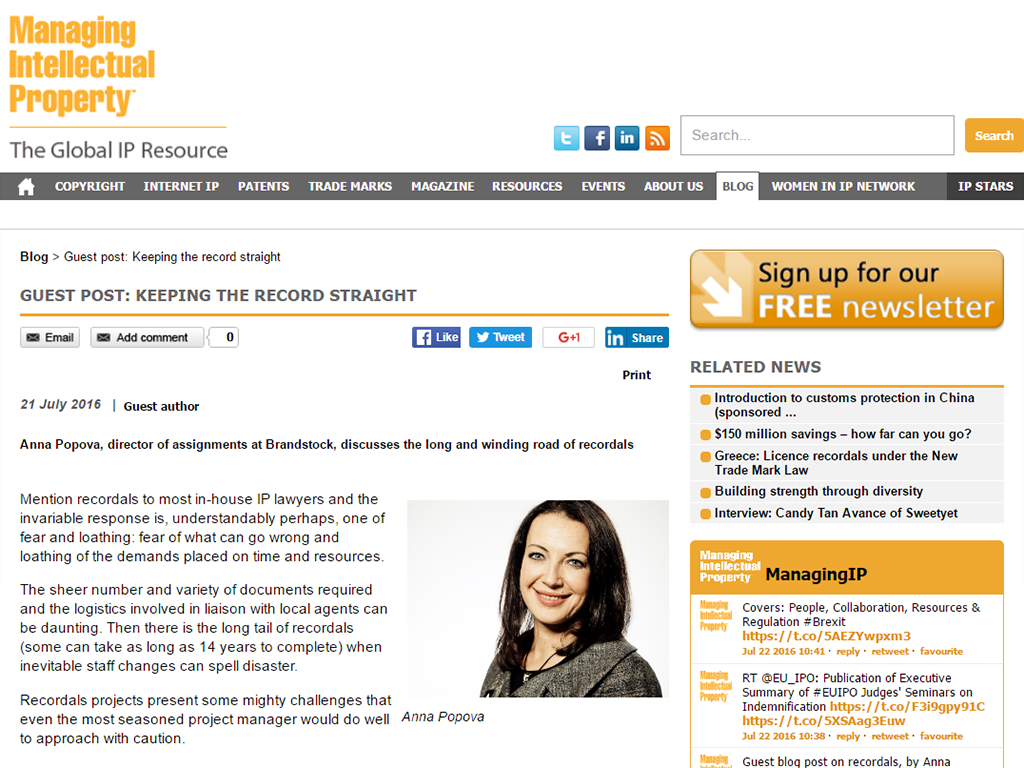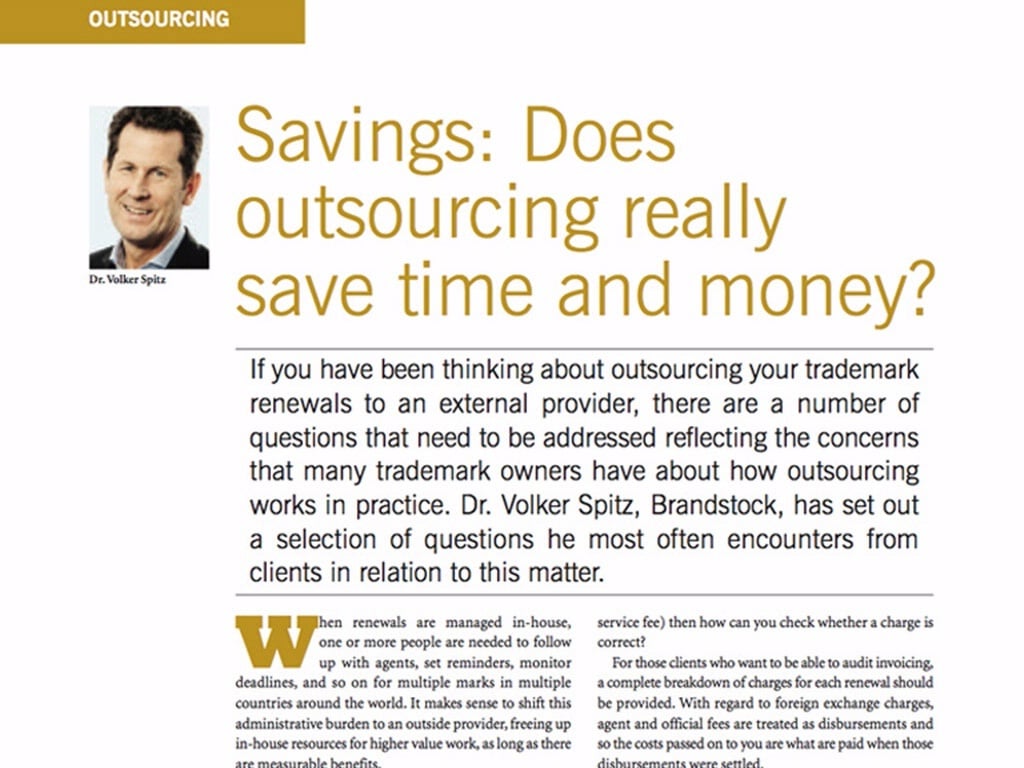Modernising in-house trademark departments
Interview published on WIPR September/October 2016 edition
It is often said that many people are resistant to change and unwilling to step out of their comfort zone. They like doing things the way they have always known. This applies to organisations as much as to individuals and invariably the result is lack of progress and reduced efficiency.
The concept of change resistance stretches far and wide, including to the structure of in-house trademark departments. Volker Spitz, CEO of Brandstock, an intellectual property service provider based in Germany, says there is a pressing need and opportunity for a top-down restructuring of how in-house trademark departments work.
According to Spitz, most in-house departments are organised in the same way: teams of IP specialists, including attorneys and support staff, dealing with everything from searching and clearing new marks to filing, protecting and enforcing them. They typically deal with numerous jurisdictions and a “multitude of tasks”, he says.
“What most don’t have today is business-orientated key account management—they don’t engage with the business as much as they could, as typically they are first and foremost IP experts who are buried, by choice or lack of it, in administrative work,” says Spitz, who argues that this approach is very expensive to operate as it involves full-time employment of highly skilled professionals who, for one reason or another, “don’t add value to the organisation in the way that they could”.
At the same time, he notes, these departments are easily overwhelmed by events that require scalable capacity; do not follow modern process management practices; do not make best use of technology; and, as a result, are not as efficient or effective as they could be.
The need for change also comes after an “enormous increase” in the complexity of how trademark professionals fulfil their responsibility to protect brand assets, says Spitz, while at the same time business leaders are demanding more effective and proactive advice more quickly and with greater transparency regarding costs, as the pace of business accelerates.
He adds that in-house lawyers increasingly need to know not only about trademarks and designs, but also about domain names; data protection; online trading; copyright; and the full spectrum of IP laws, regulations and remedies. IP assets are also being protected in an ever wider range of jurisdictions, including emerging markets where IP and legal systems are less developed. At the same time, Spitz says, budgets are contracting while IP portfolios are expanding and yet often they must be handled by the same team who are then even less able to manage the workload.
Four layers of change
With all this in mind, he discusses his proposal for change, one that he acknowledges is “radical in a few aspects”. It is essentially a four-layer vision, starting at the very top with trademark departments implementing “effective key account management”.
The first layer involves “taking care of clients” and releasing in-house people to spend time with their commercial colleagues, developing their skills as ‘counsel’ rather than as technical and procedural specialists. He also emphasises the importance of what he calls “competitor mapping” where trademark departments actively monitor and assess their rivals’ activities and performance.
The second layer involves transparency and control over costs. Spitz has pioneered “professional agent fee benchmarking” whereby departments can assess what they are paying their agents against market rates. “Lots of agents and service providers are unfortunately applying mark-ups or incorrect exchange rates, so there needs to be a mechanism for benchmarking agents’ fees and charges.”
Departments should also be looking at alternative fee arrangements, eg, agreeing on flat fees for certain services, which at the moment are mainly charged for on an hourly basis, according to Spitz. “Finally on fees, there needs to be professional invoice control—at the moment most invoices are just paid regardless.”
The third layer concerns the operations of a trademark department, which need to be improved through process automation and use of purpose-built platforms, Spitz claims. “More work needs to be shifted onto more shoulders” (such as local agents), he says, with these people doing basic but important administrative work that many IP departments do themselves at the moment, such as docketing.
“New approaches, such as combined name creation and clearance (commonly separate services, leading to more costs) need to be employed. New ways of handling trademark searches need to be tested and implemented. The market is not standing still and we are among the few that are constantly innovating to respond to changing needs,” Spitz explains.
In the final layer, which Spitz calls “professional agent management”, he says that local agents should not just be instructed, but managed; and there is an important difference between the two, he says. IP departments expect their local agents to provide them with proactive and valuable advice once they are entrusted with a certain task. However, very rarely do IP departments invest the time necessary to explain to local agents exactly what is expected of them; how the client organisation works; and what should be done to meet the client’s needs. Also, few if any IP departments systematically track the service quality of individual attorneys and firms over time and so have no means of carrying out meaningful periodic assessments of performance.
Positive outcomes
According to Spitz, under his model for change, which could take between one and three years for any given company to implement, not only would the business benefit but also the trademark team.
“By structuring the operation in a more process-orientated way, teams are more motivated and satisfied. Once local agents are managed properly and know what is expected they also become more effective.”
The big question is whether trademark departments are willing to implement change. Spitz recognises the barriers. “At the moment, for many, things are sort of working, and change itself places additional demands on people who are already so busy.”
Another problem is the lack of communication among peers, he says, with many unaware of the positive outcomes that some others have achieved through deliberate change.
“What’s missing is an open exchange of ideas among peers and evaluation of existing solutions to identify best practice and so develop an industry-wide standard; everybody is doing things differently at the moment and there is widespread under-performance against what some are achieving for their businesses.”
Spitz says some large corporations have installed legal operations managers responsible for looking into how departments can bring about meaningful change. “We have been fortunate enough to work with clients who are ready for change and we have been honing our service offerings over several years to meet current and future demands of modernising businesses” says Spitz. “This is an interesting time for everyone in legal services and no less so than in the world of trademarks”.
Do trademark departments have what it takes to change, and do they need to? Only time will tell.
